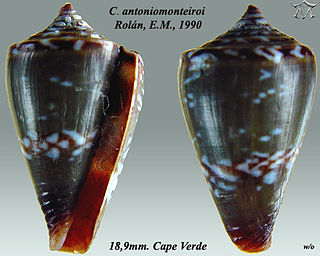
Conus antoniomonteiroi is a species of sea snail, a marine gastropod mollusk in the family Conidae, the cone snails and their allies.

Conus boavistensis is a species of sea snail, a marine gastropod mollusk in the family Conidae, the cone snails and their allies.
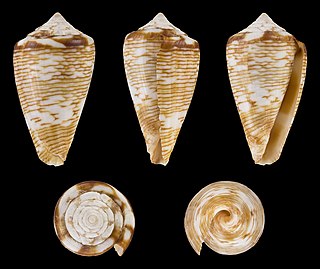
Conus crotchii is a species of sea snail, a marine gastropod mollusk in the family Conidae, the cone snails and their allies.

Conus cuneolus is a species of sea snail, a marine gastropod mollusk in the family Conidae, the cone snails and their allies.

Conus damottai, common name the Glabrous cone, is a species of sea snail, a marine gastropod mollusk in the family Conidae, the cone snails and their allies.

Conus decoratus is a species of sea snail, a marine gastropod mollusk in the family Conidae, the cone snails and their allies.

Conus fuscoflavus is a species of sea snail, a marine gastropod mollusk in the family Conidae, the cone snails and their allies.
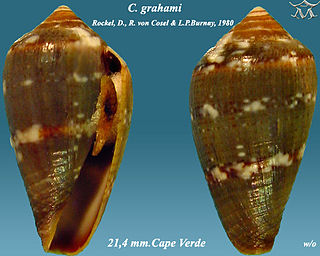
Conus grahami is a species of sea snail, a marine gastropod mollusk in the family Conidae, the cone snails and their allies.

Conus josephinae is a species of sea snail, a marine gastropod mollusk in the family Conidae, the cone snails and their allies.

Conus maioensis is a species of sea snail, a marine gastropod mollusk in the family Conidae, the cone snails and their allies.

Conus verdensis is a species of sea snail, a marine gastropod mollusk in the family Conidae, the cone snails and their allies.
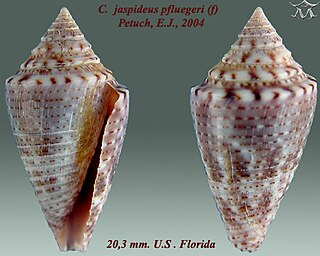
Jaspidiconus is a subgenus of sea snails, marine gastropod mollusks in the genus Conasprella, family Conidae, the cone snails and their allies.
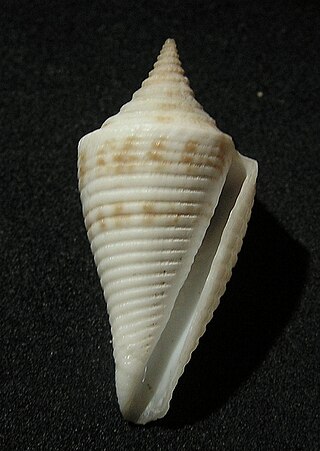
Conasprella is a genus of sea snails, marine gastropod mollusks in the family Conidae, the cone snails and their allies. This genus was formerly treated by some experts as a member of the family Conilithidae and as an "alternative representation" of this group of species.

The taxonomy of the cone snails and their allies as proposed by John K. Tucker and Manuel J. Tenorio in 2009 was a biological classification system for a large group of predatory sea snails. This system was an attempt to make taxonomic sense of the large and diverse group which contains the family Conidae, the cone snails. The authors proposed extensive changes to the family Conidae in contrast to the way the group was treated in the taxonomy of the Gastropoda by Bouchet & Rocroi, 2005. Bouchet and Rocroi included in the family Conidae several other groups of toxoglossan snails which had previously been placed in the Turridae.

Conilithidae is a proposed taxonomic family of small to medium-sized sea snails, specifically cone snails, marine gastropod mollusks in the superfamily Conoidea, the cone snails and their allies.
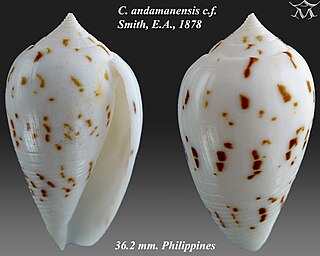
Phasmoconus is a subgenus of sea snails, marine gastropod mollusks in the genus Conus, family Conidae, the cone snails and their allies.

Varioconus is a synonym of Conus (Lautoconus)Monterosato, 1923: synonym of ConusLinnaeus, 1758. These are sea snails, marine gastropod mollusks in the family Conidae, the cone snails and their allies.

Conus longilineus is a species of sea snail, a marine gastropod mollusk in the family Conidae, the cone snails and their allies.
















